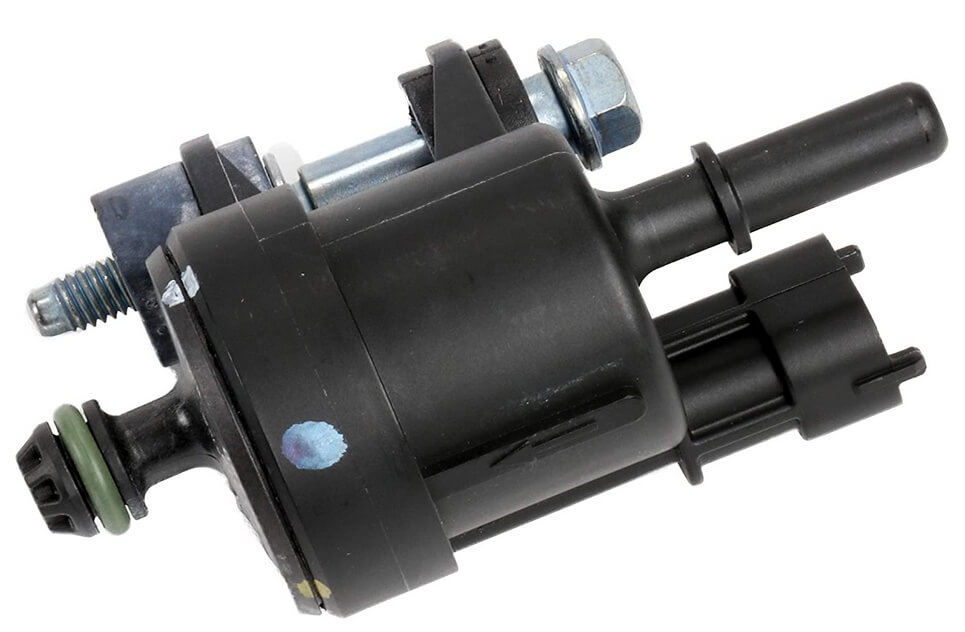P0442 code and P0455 P0456 Fixes on a Ford vehicle
Learn how to fix P0442 code and P0455 P0456 on Ford Vehicles
A P0442 code is defined as: Evaporative System Malfunction, Small Leak. A P0455 is: EVAP large leak detected. A P0456 is: Evaporative Emissions System – Small Leak Detected. Understanding how the evaporative emissions system works helps you to diagnose those dreaded EVAP leak codes. So buckle up and I’ll try to make this as painless as possible.
Most common causes of aP0442 code and P0455 P0456
• Capless fuel tank filler — If your Ford is equipped with a capless flap on the fuel tank filler, this is a common problem.
• Stuck open purge valve
• Faulty fuel tank pressure sensor
• Cracked or broken hoses from the tank to the charcoal canister, canister to purge valve
• Cracked charcoal canister
Ford Evaporative Emissions System Components
The system uses two solenoids and a pressure sensor. One sensor is called the Vapor Management Valve (VMV). The other is called the Canister Vent Solenoid (CV). The sensor is referred to as the Fuel Tank Pressure Sensor (FTP).
The VMV is normally in the CLOSED position. It has 3 hoses running into it and two wires. Two of those hoses are about 3/8 in diameter. The other hose is smaller (3/16-in) and most often provides an intake manifold vacuum. The two wires are battery voltage (with key in the on position) and ground. When the powertrain control module (PCM) commands the VMV to open, it provides a ground to the valve.
The CV is normally OPEN. It also has two wires—battery voltage with key on and PCM-controlled ground. Since vent valves can get clogged with dirt and crud from the road, some models run a rubber hose up near the filler neck to prevent ingestion of this dirt. The CV itself is usually mounted to the charcoal canister. So, when the system is not operating, the charcoal canister can vent to the atmosphere. When the PCM want to check the system, it grounds the CV, closing off the vent to seal the system. Then it grounds the VMV to allow manifold vacuum to pull a vacuum on the entire system.
That’s where the FTP comes into play. It’s like a manifold absolute pressure (MAP) sensor. It measures the amount of vacuum in the system, compared to atmospheric pressure. The FTP is usually mounted at the top of the fuel tank. Or, it can be mounted in the vapor line going from the VMV to the fuel tank and charcoal canister. NOTE: Some of the late model FORDS also watch the fuel level to provide a compensating algorithm to the calculation based on the amount of fuel in the tank.
Test Criteria
Here’s how the PCM conducts a test:
1) Engine must be running,
2) Engine within normal temp range (not overheating),
3) Engine is at idle or part throttle,
4) Engine management system is in Closed Loop (PCM is reading actual data from Oxygen sensor—not operating off of factory programming,
5) PCM grounds CV to seal system and create negative pressure,
6) PCM grounds VMV to allow manifold vacuum into system.
7) PCM watches FTP to see voltage drop as vacuum increases. PCM continues to watch until vacuum reaches 7-in H2O.
8) PCM de-energizes VMV. Vacuum is now on entire system and holding. PCM watches FTP to sense any voltage change. If there’s a leak in the system, FTP voltage will increase. The PCM can detect the size of the leak based on how fast the voltage rises. A P0442 trouble code will set if there’s more than a 2.5” H2O change in 15 seconds with ¾ tank of gas. Late model Fords set a P0456 if it sees a change of 2.5-in H2O in 45 seconds. (Decrease in vacuum depends on how much fuel is in the tank). The PCM will set P0455 when it sees more than 7-in H2O change in over 30 seconds.
© 2012 Rick Muscoplat
Posted on by Rick Muscoplat
